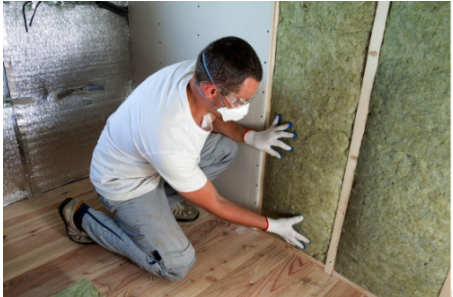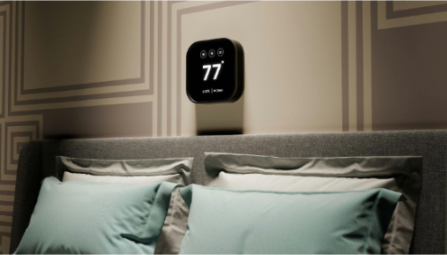
Image from Unsplash
Many Gloucester City homes were built decades ago, with charm and character that’s hard to find today. But older houses often come with old plumbing, drafty windows, and high energy costs. When thinking about updates, homeowners sometimes hire a local plumber to fix leaks, replace old pipes, or improve water efficiency, but there are many more upgrades beyond plumbing that can make a big difference in comfort and savings.
If your house is feeling drafty, expensive to cool or heat, or just not as comfortable as it used to be, here are five smart upgrades to consider that will help both your home’s energy efficiency and your quality of living.
1. Improve Insulation & Seal Air Leaks
One of the most common issues in older homes is poor insulation or gaps where air leaks in. Cold air can seep through cracks in the walls, around windows, and through uninsulated attics, making heating systems work overtime.
- Attic insulation: Adding or upgrading insulation in the attic helps prevent heat from escaping. It’s often the single most impactful improvement.
- Seal around windows, doors & baseboards: Use weatherstripping and caulking to close gaps.
- Wall insulation: If walls are accessible (during renovations or siding work), consider blowing in insulation or adding rigid foam on exterior walls.
These upgrades mean your heating and cooling system won’t have to work as hard, reducing utility bills and increasing comfort.
2. Upgrade Windows & Doors
Old single-pane windows or poorly fitting doors are major culprits for energy loss.
- Install double- or triple-pane windows with low-E coatings. These windows keep heat in during winter and block heat from outside in summer.
- Upgrade to ENERGY STAR certified windows when possible. These are tested and rated for energy performance.
- Weatherproof doors: Replace old doors or add storm/screen doors. Ensure proper sealing around frames.
Even just replacing windows on the most exposed sides of your house can lead to noticeable savings over time.
3. Modernize Heating, Cooling & Ventilation
Older systems are often inefficient, and poor ventilation worsens indoor air quality.
- Replace old furnaces or AC units with high-efficiency models. Heat pumps can also be a great option in many climates.
- Ensure proper ventilation: Gable vents, exhaust fans, or HRVs (heat recovery ventilators) help reduce humidity and moisture buildup.
- Duct sealing: If you have forced-air systems, make sure ducts are sealed and insulated. Leaky ducts can waste a lot of energy.
Not only do efficient systems lower your bills, but they improve comfort (less uneven heating/cooling) and reduce issues like mold.
4. Upgrade Water Heating & Fixtures
Water heating is often one of the top energy users in a household. Small changes here can make big differences.
- Low-flow fixtures: Showerheads and faucets that reduce flow can save both water and energy.
- Insulated water heater: Adding insulation around the tank and pipes helps retain heat.
- Tankless or high-efficiency water heaters: These heat water on demand and avoid standby energy losses.
Fixing plumbing leaks (a project your local plumber might already be helping with) also prevents wasted water and energy.
5. Smart Home Upgrades & Lighting

Image from Unsplash
Technology has made it easier to improve efficiency with intelligent enhancements.
- Smart thermostats: They adapt to schedules, can be controlled remotely, and reduce wasted heating/cooling.
- LED lighting: Replace incandescent bulbs throughout the home, LEDs use far less energy and last much longer.
- Programmable timers and motion sensors: For outdoor lighting, hallways, bathrooms, these avoid leaving lights on unnecessarily.
These upgrades often have low upfront cost but deliver compounding savings over the years.
Financial Incentives & Local Programs
Many homeowners are surprised how many rebates, tax credits, and programs exist to help cover the cost of these upgrades.
- In the U.S., the Energy Efficient Home Improvement Credit offers tax credits for things like windows, insulation and efficient heating/cooling systems.
- Programs like the Weatherization Assistance Program help low-income households improve energy efficiency.
Gloucester City homeowners can check with county or state energy offices for local rebates or grants. Doing a small audit (sometimes free or low-cost) can show which upgrades will pay off quickest in your home.
Prioritize Based on Your Home’s Needs
Not all upgrades yield the same return, depending on your home’s age, climate, and condition. Here’s how to choose:
- Walk around your house: Note areas that are drafty, cold, or have moisture problems.
- Check past energy bills: A sudden spike might point to failing insulation or HVAC problems.
- Start with “no- or low-cost” fixes: Sealing leaks, adding insulation, and LED lights often pay for themselves quickly.
- Plan larger projects when needed: Replacing windows or upgrading major systems can take more investment but deliver long-term benefit.
Older homes in Gloucester City carry character and history, but they also face modern challenges: higher energy bills, drafts, moisture, and discomfort. By focusing on insulation, windows, heating systems, water fixtures, and smart upgrades, you can boost comfort while saving money over the long run. Pair these improvements with financial incentives and local help, and your home can stay cozy, efficient, and looking great for years to come.